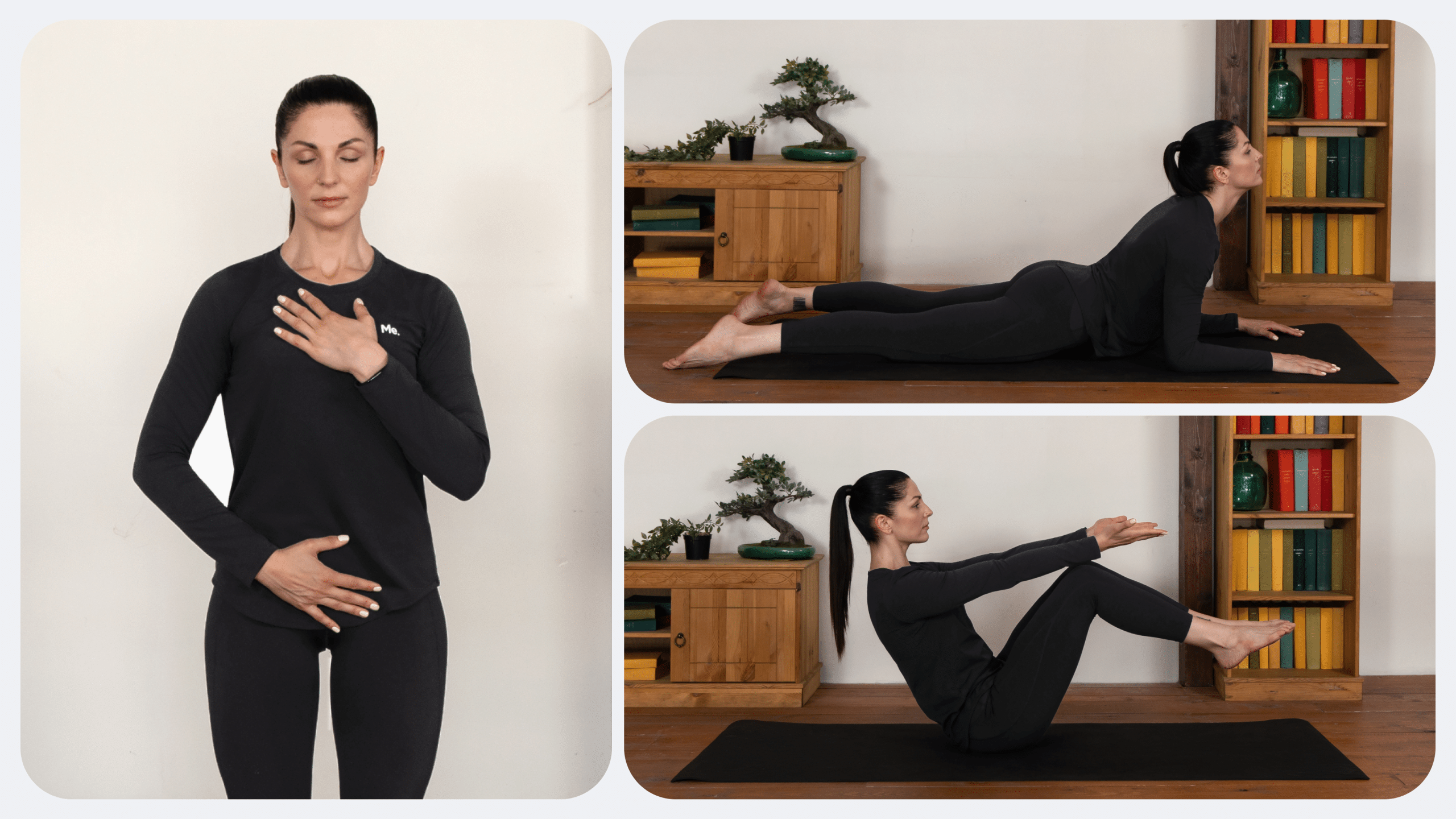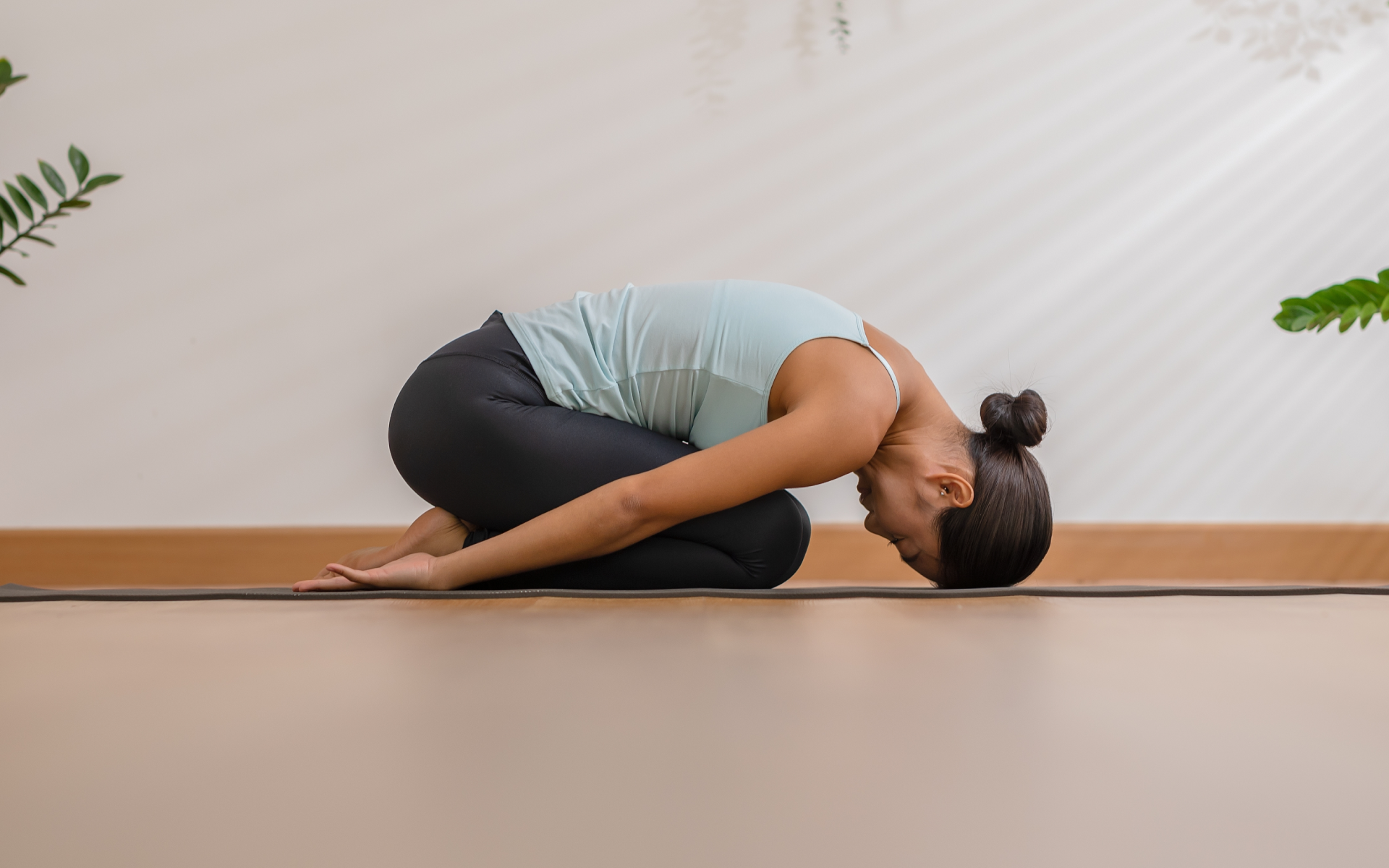We often hear that what happens inside our bodies matters more than how we look on the outside, which emphasizes that our health is the most important factor.
The focus of somatic movement therapy is on the mind-body connection and encourages people to pay attention to the physical sensations that arise during movement and the emotions that may be linked to them. Rather than striving for particular goals, this approach may help individuals reconnect with their bodies safely and healthily, often accompanied by a mental health professional.
This article will explore what somatic movement therapy is, the most common somatic healing techniques, and what you need to know before getting started.
What Is Somatic Movement Therapy?
Somatic movement therapy is an approach to healing that is focused on strengthening the connection between mind and body (1). It involves intentional movements to tune into how you feel in your body, rather than striving for appearance-based goals or achieving a specific physical outcome.
The term “somatic” comes from the Greek word “soma”, which translates to “the body as perceived from within” (2). In the health community, “somatic” encompasses a wide range of healing techniques, most of which are focused on the internal experience of the body rather than its external appearance.
Many somatic movement therapy exercises encourage listening to your body without judgment, aiming to build body awareness and strengthen the mind-body connection. By noticing physical sensations that arise during movement and emotions that may be linked to them, you can process and heal from emotional difficulties healthily and gradually, potentially improving your emotional resilience and overall well-being (3).
If you wish to free yourself from all the extra pounds that have been weighing you down for way too long, start using the BetterMe: Health Coaching app and overhaul your entire life!
What Does Somatic Movement Therapy Help With?
Although somatic therapy was initially employed to help people with a significant trauma history manage their symptoms, it has evolved to potentially benefit those who are seeking relief from a variety of emotional difficulties (3).
It’s important to note that the effects of somatic therapy exercises can vary significantly from person to person, so different techniques may be more effective than others, depending on your individual needs. Always consult a healthcare professional to determine the best somatic exercise plan that is aligned with your health needs and goals.
When performed regularly, common benefits of somatic therapy can include (3)(4):
- Reduced stress and worry
- Improved body awareness
- Relieved chronic pain and tension
- Improved flexibility and range of motion
Read more: Somatic Couples Therapy: Everything You Need to Know
Somatic Movement Therapy Methods
Many somatic movement therapy methods are available, each of which offers its own distinct purpose and benefits. As the effects can vary widely, don’t hesitate to experiment with different exercises until you discover what feels best for you.
Focusing on exercises that prioritize movement, here are some of the most common somatic therapy techniques you can consider:
- Somatic stretching: Gentle stretches often focused on body awareness, breath control, and muscle tension release (5)
- Somatic yoga: Combines traditional yoga poses with mindful movement and deep breathing to reduce feelings of stress and worry (6)
- Somatic dancing: Expressing yourself through free-form dancing to release built-up tension, energy, and stress (7)
- Somatic shaking: Self-induced shaking movements that are meant to “shake off” stress and tension from the body, allowing for healthier emotional release (8)
Exercises such as Pilates and tai chi can also be considered somatic practices (9), but only when performed with mindfulness rather than for achieving specific goals. While all the exercises mentioned above may be beneficial, the key is to explore various techniques and find what resonates best with your emotional and physical needs.
Are you interested in finding more easy somatic exercises? The BetterMe app offers an abundance of resources and tutorials to help get you started.
Whether you’re a workout beast or just a beginner making your first foray into the world of fitness and dieting – BetterMe has a lot to offer to both newbies and experts! Install the app and experience the versatility first-hand!
What Does a Somatic Therapy Session Look Like?
When you use somatic exercises to release trauma or manage mental health difficulties, it’s important to work alongside a mental health professional as they can provide the necessary support and guidance to help you navigate the healing process effectively.
Once you start working with a somatic therapist, the structure of each session can vary based on the specific issues you’re addressing. While every session is tailored to your unique needs, many will include guided somatic exercises that help you reconnect with your body while releasing stored tension and emotions (3).
Throughout the session, the therapist often encourages open communication about any physical sensations and emotions that are linked to them. Sessions may also include periods of reflection and discussion about the somatic work to help advance your healing journey.
At the same time, self-guided somatic exercises for everyday stress and worry relief tend to be shorter and less intense. They can include quick breathing exercises, body scanning, and any other movement that aims to enhance mind-body awareness (10).
If you’re looking for a somatic therapist, the Psychology Today website has a search tool that can help you find a suitable provider in your area (United States only).

Somatic Movement vs Yoga
Yoga can be considered to be a somatic practice when it focuses on internal experiences (6). With this approach, emphasis is placed on how the body feels during each movement, often accompanied by other mind-body techniques such as breathwork and mindfulness.
Conversely, yoga routines that prioritize mimicking certain poses or achieving a physical goal don’t fall under the category of therapeutic somatic movement as they shift the focus away from the body’s internal sensations and awareness.
To clarify the differences between therapy-focused somatic yoga (17) and yoga as a physical exercise activity, here’s a comparison:
| Somatic Yoga | Regular Yoga |
|---|---|
| Gentle and intuitive movements, often guided by your internal sensations | Structured movements and poses that prioritize form and alignment |
| Focus on mindfulness and improving internal body awareness | Focus on achieving specific poses or physical outcomes |
| Encourages listening to the body and responding naturally to its needs | Often follows a set routine or a sequence of poses |
| Goals: Improving the mind-body connection and releasing tension | Goals: Improving flexibility, strength, range of motion, and physical fitness |
What Are Somatic Movements for Trauma?
If you’re dealing with trauma or other mental health challenges, professional support is essential. Mental health providers play a vital role in navigating the complex emotions and physical sensations that often accompany trauma, and they can also provide guidance and resources to support you on your healing journey.
Trauma expert Dr. Peter Levine developed somatic experiencing (SE) to help individuals process and heal from trauma, focusing on how negative emotions and experiences are often stored in the body (3). A multitude of somatic experiencing exercises are used in somatic trauma therapy sessions to support healthy and gradual trauma recovery.
Some of the most common somatic exercises for trauma release include:
- Grounding exercises: Techniques that help you feel connected to the present moment and your physical body, reducing feelings of dissociation (11)
- Somatic shaking: Gentle shaking movements that help release built-up stress, tension, and trauma energy from the body (8)
- Body scanning: A mindful practice of gradually bringing awareness to different parts of the body, noticing and releasing tension without judgment (12)
- Breathwork: Controlled breathing exercises that regulate the nervous system and help reduce feelings of stress and worry (13)
Read more: Somatic Bedtime Routine: How it Helps and What it Looks Like
Can You Lose Weight with Somatic Exercises?
The primary goal of somatic exercises isn’t weight loss, it’s about tuning into your body and understanding how it feels during movement.
That being said, incorporating somatic exercises that involve more active movement can support weight management when paired with a healthy diet and lifestyle. Activities such as dancing, yoga, Pilates, martial arts, and walking are all suitable somatic exercises for weight loss and weight management.
Remember that weight loss is influenced by a variety of factors, including your diet, activity level, lifestyle, and individual metabolism (14). If weight loss is your main goal, it’s best to consult a healthcare provider and a nutritionist to create a plan that is aligned with your specific health needs and fitness goals.
Yes, when you work with a mental health professional, somatic exercises may help release trauma by allowing the body to process and let go of stored tension and emotions (15). These practices facilitate emotional healing by reconnecting you with your body in a safe and supportive manner. Yes, somatic movement can reduce feelings of distress or unease by calming the nervous system and bringing you back to the present moment (3). However, it’s important to note that the effects of somatic exercises can vary from person to person, so some exercises may be more effective than others for easing tension. Pilates can be considered a somatic practice when you’re focused on mindful movement, body awareness, and noticing your internal experience. As long as the emphasis is on how your body feels during movement rather than achieving physical goals, Pilates can be an effective somatic workout for bringing you back to the present moment and improving your overall emotional well-being (16). Yes, yoga can be considered a somatic movement when it’s focused on the internal experience of the body, including physical sensations and any emotions that are linked to them. Somatic yoga exercises often include elements of mindfulness, breathwork, and improving your body awareness (6). However, when it’s focused on appearance-based goals or achieving a fitness goal, yoga isn’t considered a somatic practice.Frequently Asked Questions
Do somatic exercises release trauma?
Does somatic movement help constant worry?
Is Pilates a somatic practice?
Is yoga a somatic movement?
The Bottom Line
Whether you’re dealing with emotional difficulties or just want to improve the mind-body connection, somatic movement therapy can offer many benefits. Remember, while these exercises may be useful, it’s best to consult a healthcare professional before you try them yourself, particularly when addressing deeper emotional issues.
By exploring various somatic exercises and finding what resonates best with you, somatic movement therapy can be an effective part of your healing journey.
Are you looking for somatic exercises to try at home? The BetterMe app offers an abundance of tutorials, guides, and resources to help you get started.
DISCLAIMER:
This article is intended for general informational purposes only and does not serve to address individual circumstances. It is not a substitute for professional advice or help and should not be relied on for making any kind of decision-making. Any action taken as a direct or indirect result of the information in this article is entirely at your own risk and is your sole responsibility.
BetterMe, its content staff, and its medical advisors accept no responsibility for inaccuracies, errors, misstatements, inconsistencies, or omissions and specifically disclaim any liability, loss or risk, personal, professional or otherwise, which may be incurred as a consequence, directly or indirectly, of the use and/or application of any content.
You should always seek the advice of your physician or other qualified health provider with any questions you may have regarding a medical condition or your specific situation. Never disregard professional medical advice or delay seeking it because of BetterMe content. If you suspect or think you may have a medical emergency, call your doctor.
SOURCES:
- What is somatic therapy? (2023, health.harvard.edu)
- Somatic (n.d., vocabulary.com)
- Somatic experiencing – effectiveness and key factors of a body-oriented trauma therapy: a scoping literature review (2021, nih.gov)
- Moving With Pain: What Principles From Somatic Practices Can Offer to People Living With Chronic Pain (2020, nih.gov)
- Making the Case for More Stretching, Less Stressing (2020, nih.gov)
- Bringing therapy to life: Exploring the benefits of yoga and somatic mindfulness in psychotherapy (2023, researchgate.net)
- Impact of dance therapy on adults with psychological trauma: a systematic review (2023, nih.gov)
- Effects of Self-induced Unclassified Therapeutic Tremors on Quality of Life Among Non-professional Caregivers: A Pilot Study (2014, nih.gov)
- Movement-Based Therapies in Rehabilitation (2020, nih.gov)
- Mindfulness-Based Interventions and Body Awareness (2022, nih.gov)
- Exhibit 1.4-1 Grounding Techniques (2014, nih.gov)
- The effects of body scan meditation: A systematic review and meta-analysis (2022, nih.gov)
- Breathwork Interventions for Adults with Clinically Diagnosed Anxiety Disorders: A Scoping Review (2023, nih.gov)
- Factors That Influence Body Weight (2004, nih.gov)
- Somatic Experiencing for Posttraumatic Stress Disorder: A Randomized Controlled Outcome Study (2017, nih.gov)
- Pilates, Mindfulness and Somatic Education (2013, nih.gov)
- Yoga in the Real World: Perceptions, Motivators, Barriers, and Patterns of Use (2013, nih.gov)









